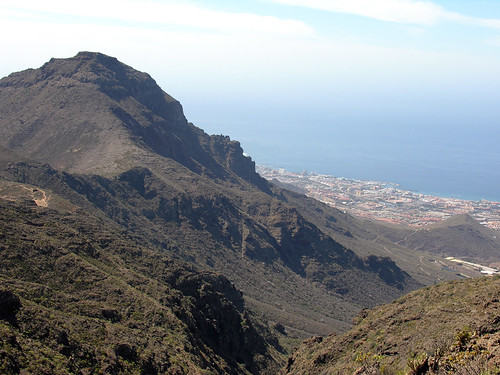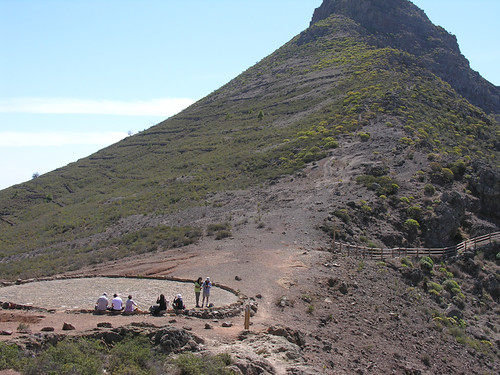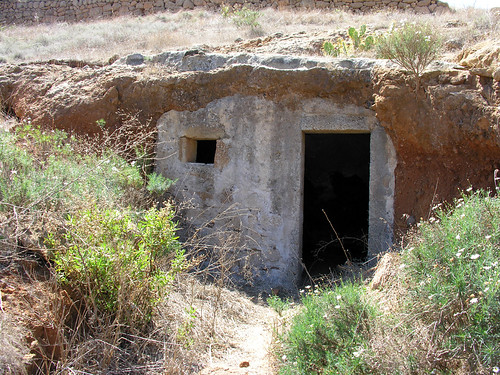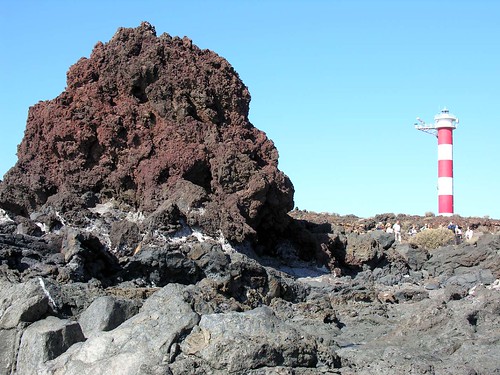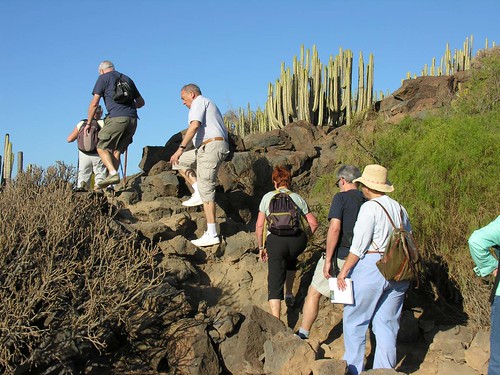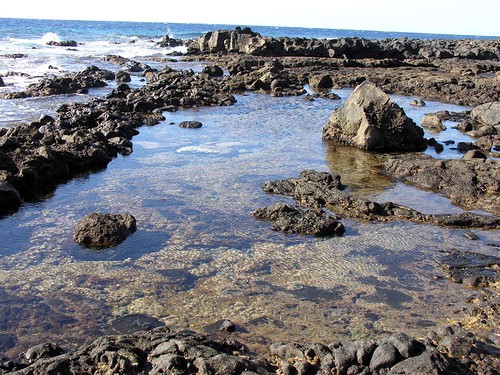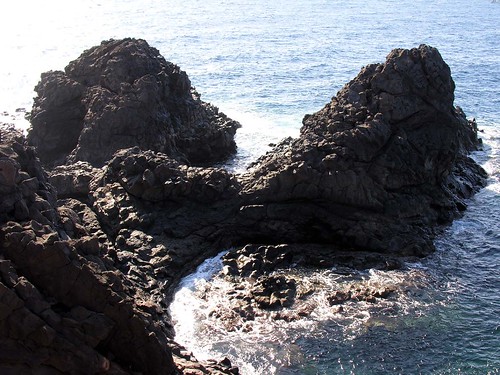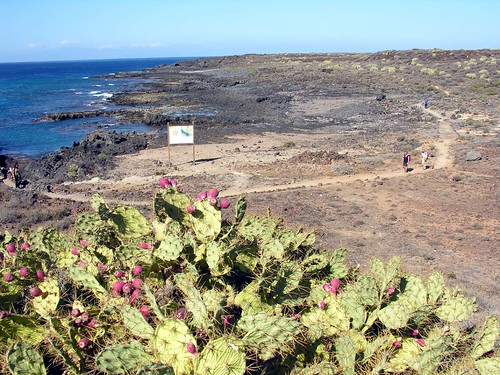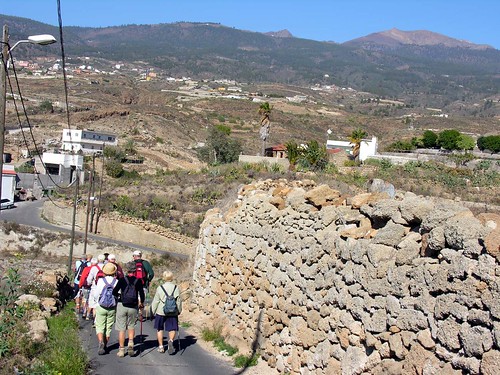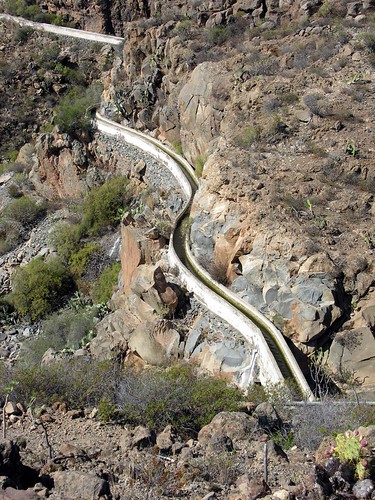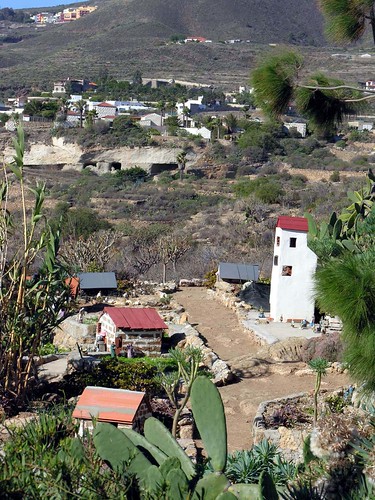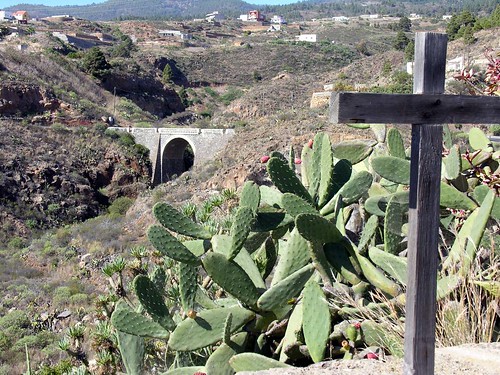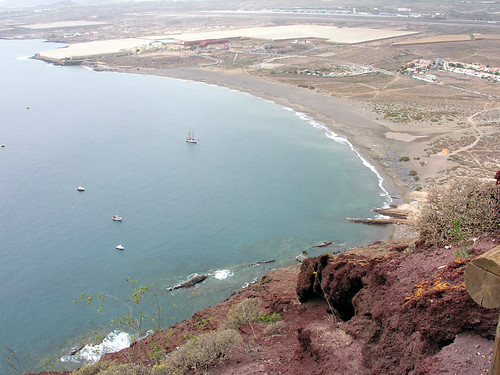
Looking down on the beaches of El Medano and ducking as the planes came and went from Reina Sofia airport, I heaved a contented sigh as an epic six and a half hour walk drew to a close. This was the latest of the Arona council free guided walks but my guide and the other 19 walkers bailed out just short of the climb to the top of Montaña Roja.
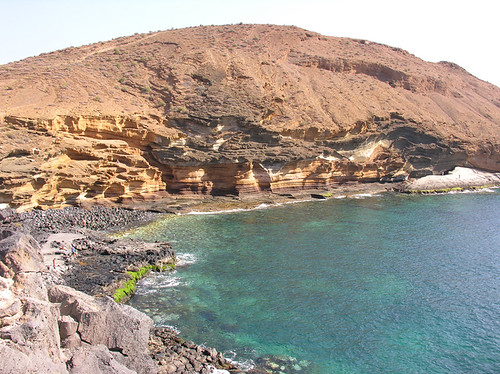
I had feared a repeat of the previous day’s calima and wild winds but a perfect clear and sunny day dawned as I met the other walkers at Las Galletas. The early part of the trek was a mix of raw nature and rampant development as we followed the coastal path through Costa del Silencio taking a few short cuts through holiday and residential complexes. The coast around and beyond Westhaven Bay is beautiful and rugged and it seemed that every spare outcrop had been claimed by a keen fisherman. As we rounded a corner we got a full frontal view of Montaña Amarilla. If I told anyone unfamiliar with Tenerife that we have a Yellow Mountain they might think I also believe that the moon is made of cheese, but the evidence was there in the distinctive tinge of the rocks as the rich turquoise sea lapped gently at the pebble beach.
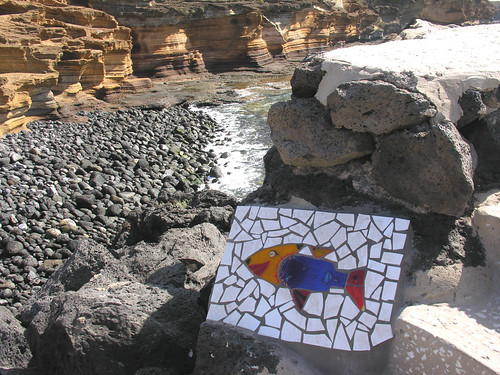
This area of the coast is being protected and nurtured as a special site for quality diving with strict limits on the prime spots where Lime Urchin, Spotted Burrfish, Grey Triggerfish, and many more wonders mingle in their watery treasure chest. There’s more information on the area and the project at this website.

It was lovely to admire but the steep ascent up Montaña Amarilla was a tough test on the legs with rewarding views from the top. Coming down the other side Amarilla Golf and Golf del Sur loomed up in the distance but we had a snack stop on the large pebbled beach and enjoyed a light breeze. There were already a few camper vans sprinkled around but nothing compared to the motorcade that will swarm down for Semana Santa – Easter Week.
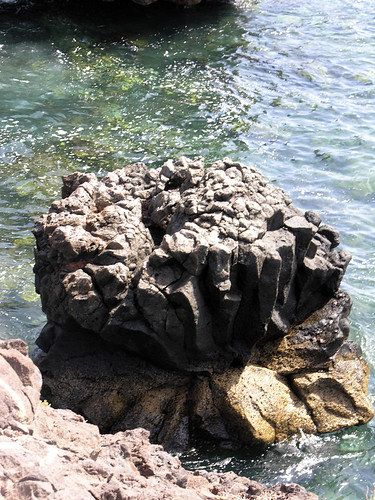
Skirting the two golf courses and San Miguel marina we were soon back on the concrete promenade passing San Blas before diving down to the beach again. Rock pools were teaming with young human life as well as sea creatures as we passed Playa Grande and hit Los Abrigos. Here the first dissent started to show as some walkers wanted to catch a bus to El Medano, thankfully the majority realised that this was advertised as a walk so we passed through the delightful Los Abrigos. Some of my Armada Sur football friends were sat outside a bar and teased me with their ice cold pints of Dorada – tempting but the taps would still be full later.
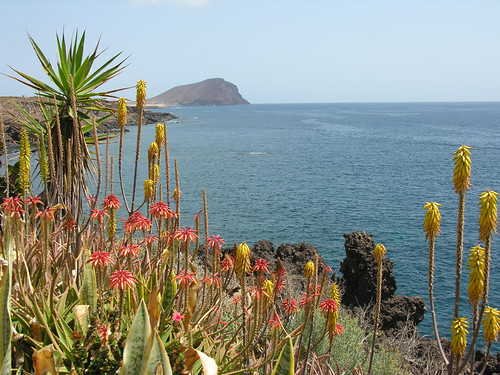
Coming out of Los Abrigos Montaña Roja loomed larger and nearer as we trudged along the sandy beach and onto the coastal path outside the banana plantations. Lots of different bird species hang out in El Medano and whilst a few shy and elusive visitors like the Corredor left us with just a snatch of bird song I did get a shot of this Whimbrel (Zarapito Trinador) on holiday from South America.
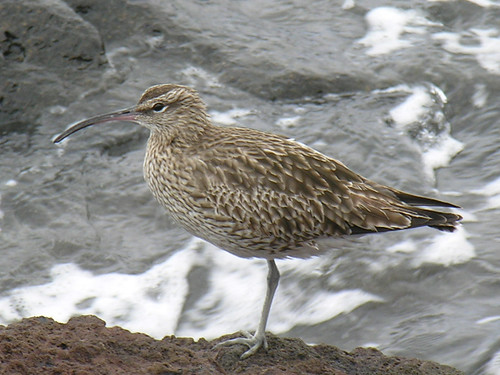
Veering away from the main road and kicking our way through the sand we eventually headed back to the camp site by the main road where the others swarmed on a bus stop ready to head back to Los Cristianos. Our travels had already gone beyond five hours but Montaña Roja was advertised as a key point of the walk and I had only seen the 171 metre high peak once before. I had water left in my bottle and one last smelly squashed salami roll so in my best stubborn mood I stomped off to find the main path I needed.


As the path curled around the base of the mountain and headed upwards, my legs were cursing me but the views were already getting even better. Only a few people passed coming down as I kept to the more rugged side of the corkscrew path. Within 30 minute I was at the peak by the concrete stack and admiring the busy airport and the beaches peppered with bodies, some of them nude at La Tejita. Looking back Montaña Amarilla seemed a long way off, the jagged coastline etched in my memory. A few photos and a gulp of water and I was picking my way back down, this time turning onto the path across the main beach and into the heart of El Medano just in time to catch the 4pm bus home. Definitely worth the extra effort.
